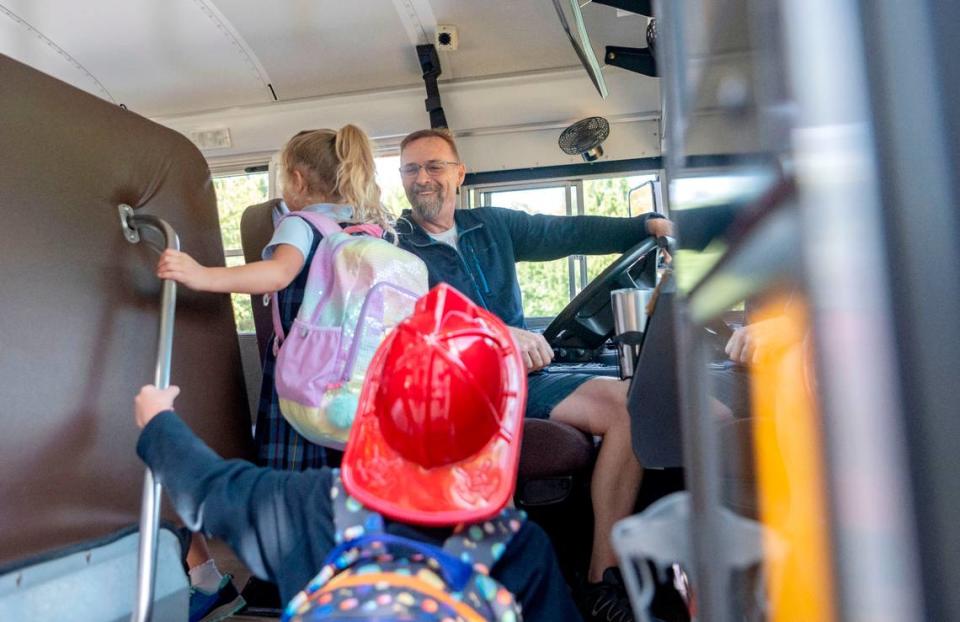Centre County school districts make changes due to bus driver shortage. ‘Facing a real crunch’
Since 1995, Darrell Egolf has been the first person the State College students of Bus 101 see on their journey to school and the last one to say goodbye.
“I was only going to work for one year,” he said. “But I kept putting off another year, another year. I just never quit; I do this full time, I drive eight hours a day.”
But Egolf is part of a dwindling group of school bus drivers as districts across the country struggle to find and replace drivers. Some schools have delayed starts or even moved classes online to combat the shortage. While Centre County schools haven’t experienced those consequences, administrators are concerned about future impacts if the shortage persists and are looking for possible solutions.
Just after the start of the new school year, the State College Area School District sent out a letter to families about the shortage, and asking those interested in being a bus driver to apply. The district explained the consolidation of five bus routes and that students were facing late arrivals and longer transportation times.
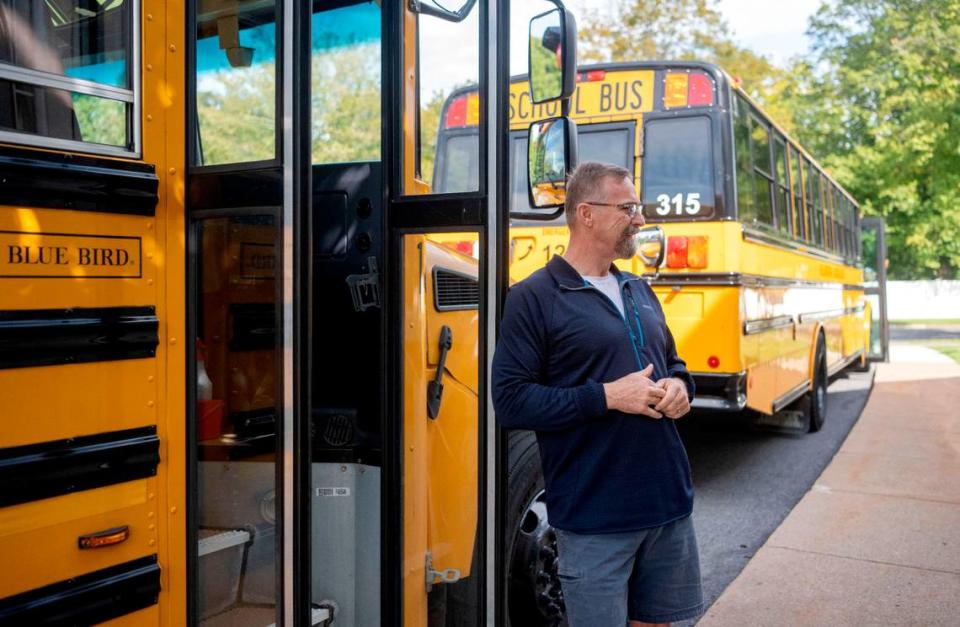
The district also warned that without full-time drivers, the district may have to change transportation eligibility or further change routes.
“We’re actively seeking drivers,” SCASD Finance and Operations Director Randy Brown said in the letter. “Right now, we’re facing a real crunch that could make transporting students more challenging this year.”
SCASD directly employs 40% of its drivers, contracting the remaining positions out to other transportation companies. In 2022, the district employed 37 drivers. This year it only has 26, director of transportation for SCASD Van Swauger said.
“It’s a huge responsibility for people and the fact that we used to get retirees a lot of times, people retired from their regular day job and wanted to be a bus driver just to make some extra money, and I know we’re not getting those anymore,” Swauger said.
State College isn’t the only Centre County district facing struggles with transportation. Bald Eagle Area superintendent Curt Whitesel said drivers often have to double up on routes or find coverage if a driver is out for the day.
The problem is persistent across Pennsylvania, especially in rural districts like Keystone Central, which serves a small portion of Centre County students. Jacquelyn Martin, superintendent of Keystone Central School District, has a unique transportation challenge as the district spans three counties. Keystone is the geographically largest school district in the state, with over 970 square miles, most of it forest or farmland. Martin said the district transportation covers over 7,500 miles, and some students are on the bus for over an hour.
“We value our bus drivers so much,” Martin said. “In many cases for kids, they’re the first adult that they see in the morning and the last adult that they see in the evening. We trust them emphatically with our children, and they build great relationships with kids. They’re so valuable in getting our school system to work.”
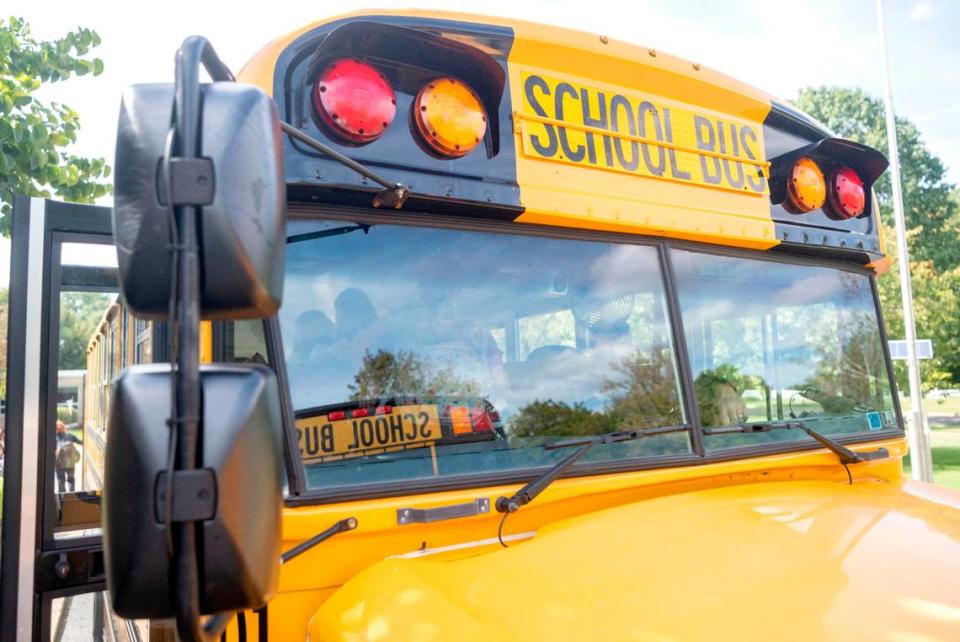
Transportation outside the district
Under Pennsylvania law, public school districts must provide transportation to students attending private, charter and parochial schools within 10 miles of the district’s border. Although students at non-district schools are only a fraction of the total students transported per day, costs can start to add up quickly.
“I mean, you’re bussing 500 kids every day,” Martin said. “It’s millions and it’s millions of dollars.”
Out of the 7,000 students SCASD transports each day, nearly 700 of them go to the 11 private, charter or parochial schools within the district’s transportation limits. Egolf drives both SCASD and Our Lady of Victory students, but the shortage of drives has led some routes to be combined.
“In the morning we hold the private school kids on their own routes,” Egolf said. “The afternoon it changes because we don’t have enough drivers. We put the Young Scholars school and CLC, Center Learning Center, on the high school buses and that creates its own problems.”
Bellefonte Area School District often uses vans to transport students to non-district schools rather than an entire school bus. Ken Bean, director of fiscal affairs for the district, said the increased need for van drivers started prior to the pandemic as the number of students who needed additional accommodations not served by a typical school bus increased.
“I have six van drivers that are district employees that are busy nonstop, and I have so much need I have to contract individual vans as well,” Bean said. “That’s where my biggest need is — van drivers.”
Due to the scarcity of drivers and the distances to some charter schools, some districts including Bellefonte Area and Keystone Central have had to contract parents to do their own transportation. These contracts are rare but allow the district to reimburse parents for transporting their students to specialized locations, like a school for students with disabilities, when the district cannot find transportation.
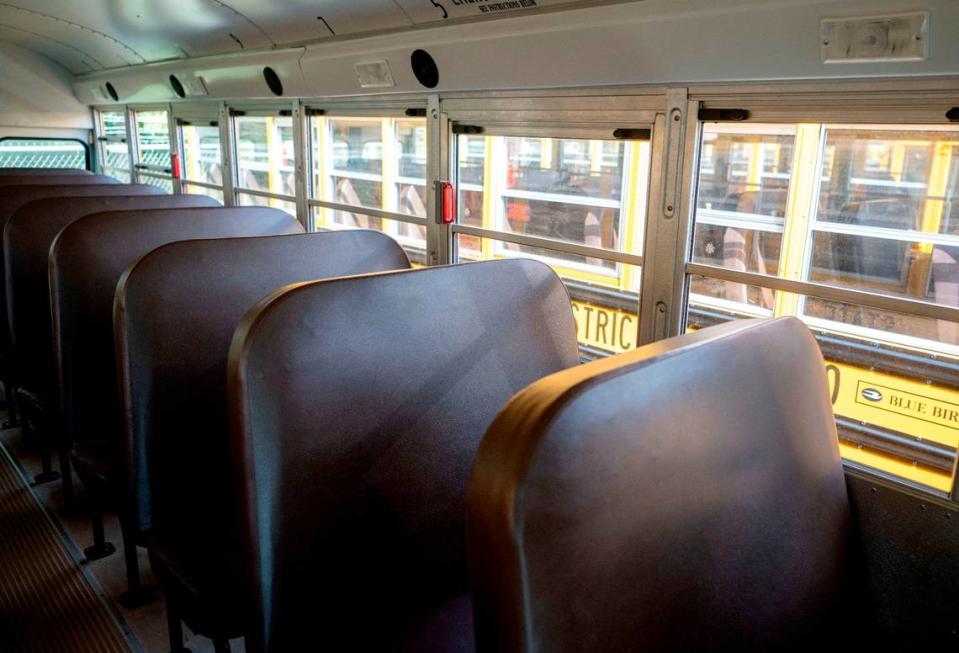
Barriers for potential drivers
Due to the odd hours, the industry has long been populated by retirees, an employment group that rapidly declined during the onset of the COVID pandemic, Martin said.
“During COVID there were several bus drivers who were ... more at risk for health reasons,” Martin said. “They had to stop driving because of their health and the risks to them.”
And years later, retirees aren’t coming back to bus driving and new drivers face several barriers, including hours that don’t appeal to everyone, low pay and the lengthy certification process.
A two-month CDL training course at the Central Pennsylvania Institue of Science and Technology costs $6,084. But even when districts and transportation companies cover the costs of CDL training, there’s no guarantee people will follow the two-month program.
“Talking to some of the new people that come in — a lot of them don’t even finish training,” Egolf said. “Because it’s so difficult. They just quit. We have a lot of people just quit halfway through. You see him for a couple training sessions and then they just leave.”
For the same licensing process, drivers can receive better pay for commercial driving. SCASD driver positions start at $20.40 an hour while nationally CDL certified drivers can earn an average of $24 an hour, according to the Bureau of Labor Statistics.
The training process can also be a barrier to potential drivers. Swauger said most people who are looking to make extra money through driving may be discouraged by the lengthy training and certification process.
“It’s a long process, once it was two to three weeks and you can have your license — now it’s two to three months to get a license,” Swauger said. “A lot of people that we attract need that income now. We do have paid training, but you know, it’s not enough for some people.”
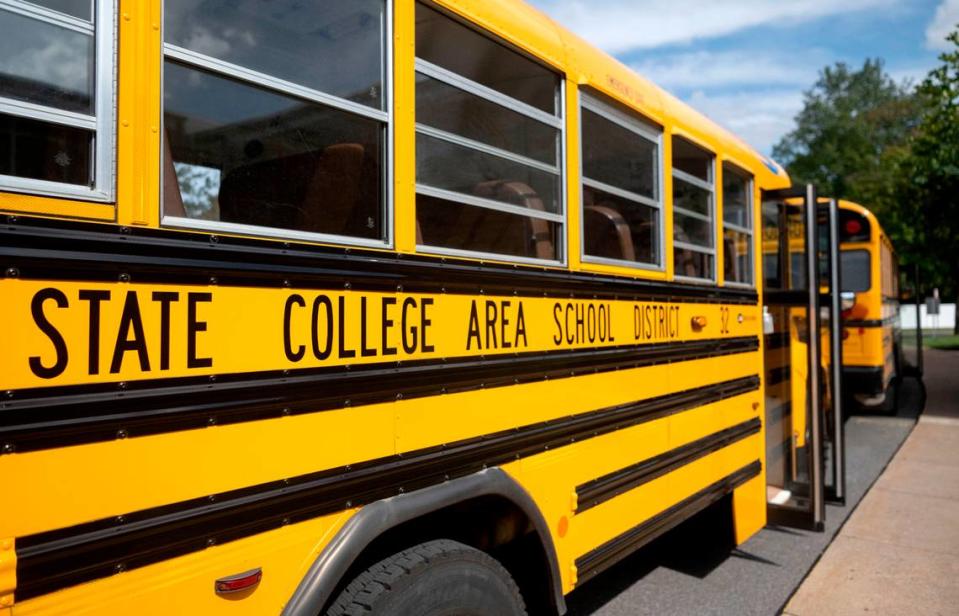
Loosening requirements
With schools across the country struggling to find drivers, some states are looking at making CDL certifications easier for potential drivers. In August, PennDOT loosened some CDL requirements in response to the driver shortage. Previously, the test had an “under the hood” segment that required the driver to identify parts of the engine. Swauger said the mechanical aspects of the test and certification process were a barrier to potential drivers.
“As far as learning all the mechanics of the bus, I think that has hurt us because I don’t know anybody that wouldn’t call our mechanical staff here and say ‘hey, I broke down,’” Swauger said.
Despite the increasingly complex routes and requirements, Egolf said the students and the work environment is the best part of his job.
“The kids are just absolutely fantastic,” he said. “And the administration is great to work for. For me, I enjoy actually being a bus driver.”
